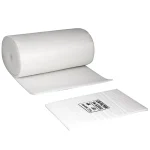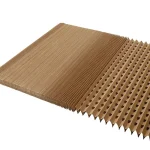How to Maintain and Replace Your Paint Booth Filters for Continuous Efficiency
In the world of professional painting, whether it’s automotive, industrial, or artistic, the quality of the final product is paramount. As any seasoned painter knows, the secret to flawless finishes often lies in the quality of your air.
At the heart of achieving that impeccable finish lies an often underappreciated hero: the paint booth filter. How well your paint booth filters are maintained determines the air quality in your paint booths.
These filters are crucial not just for the obvious—capturing overspray and maintaining a clean workspace—but for their less visible role in safeguarding air quality and, consequently, the integrity of each paint job.

Table of Contents:
Section 1: Understanding Paint Booth Filters
Section 2: Signs It’s Time to Replace Your Filters
Section 3: Maintenance Tips for Paint Booth Filters
Section 4: Step-by-Step Guide to Replacing Paint Booth Filters
Section 5: Choosing the Right Replacement Filters
Understanding Paint Booth Filters

Role of Air Filters in Paint Booths
Paint booth filters are the unsung heroes of the automotive and industrial painting industries. These filters play a crucial role in ensuring the air quality within the booth is pristine, directly affecting the quality of the paint finishes.
By trapping dust, overspray, and other airborne particles, paint booth filters prevent defects in the paint job and protect the health of the workers by maintaining clean breathing air.
Types of filters commonly used in paint booths
The variety of filters used in paint booths is tailored to address different stages of the painting and air filtration process. Common types include:
Fiberglass Filters: Fiberglass media captures paint overspray, ensuring a good production environment.
Polyester Filters: Polyester filters offer a step up in efficiency and durability. They are designed to capture medium to small particles before they enter paint booths, ensuring a cleaner painting environment.
Their strength and resistance to moisture make them suitable for a variety of conditions.
Signs It’s Time to Replace Your Filters
Recognizing when to replace your paint booth filters is crucial for maintaining not only the efficiency of your booth but also the quality of your finishes.
Here are the key indicators that it’s time for a filter change:
Visible Signs of Clogging or Damage:
Regular inspections might reveal filters that are visibly clogged with paint overspray, dust, or debris. Any signs of damage, such as tears or holes, compromise the filter’s ability to capture particulates effectively. These physical signs are clear indicators that your filters are due for a replacement.
Decreased Airflow:
A reduction in airflow within your paint booth is a significant sign that your filters are clogged. This restriction can lead to a range of issues, from extended drying times to uneven curing of paint.
Increase in Dust or Contaminants in Finished Products:
Perhaps the most telling sign is the quality of your finished products. An uptick in dust, dirt, or other contaminants on your freshly painted surfaces directly points to a filtration problem.
When filters fail to trap these particulates, they end up on your workpiece, affecting the smoothness and integrity of the paint job.
Maintenance Tips for Paint Booth Filters
Proper maintenance of your paint booth filters is crucial for sustaining performance and ensuring the longevity of your filtration system.
A proactive approach to filter care can significantly impact the overall efficiency and effectiveness of your paint booth.
Here are some essential tips to keep in mind:
Regular Inspections:
Make it a habit to regularly check your filters for accumulation of paint, dust, and any visible damage. Early detection of wear and tear allows for timely interventions, preventing more significant issues down the line.
Cleaning Reusable Filters:
If your paint booth utilizes reusable filters, such as certain polyester types, gentle cleaning according to the manufacturer’s instructions can help restore their efficiency. However, ensure that the cleaning process does not compromise the filter’s integrity. It’s crucial to assess whether the filter can be effectively cleaned or if replacement is a more viable option.
Maintain Optimal Airflow:
The primary function of your paint booth filters is to maintain a clean, dust-free environment by ensuring optimal airflow. Regular maintenance helps prevent blockages that can restrict airflow, thus avoiding unnecessary strain on your HVAC system and ensuring that your paint finishes are of the highest quality.

Step-by-Step Guide to Replacing Paint Booth Filters
Changing the filters in your paint booth is a straightforward process that plays a pivotal role in maintaining air quality and ensuring the safety of your workspace. Here’s how you can efficiently replace your paint booth filters without hassle:
Preparation:
Safety First: Before starting, ensure you have the appropriate safety gear. Gloves, safety glasses, and masks can protect you from inhaling any particulates or coming into direct contact with contaminants.
Gather Tools: Depending on your paint booth design, you might need specific tools to remove the filter housing or frame. Have these tools handy before you begin.
Removal of Old Filters:
Power Down: Ensure the paint booth and any associated ventilation systems are turned off.
Access Filters: Open the filter housing or frame. This might involve unscrewing, unlatching, or simply sliding out the filter section.
Careful Removal: Gently remove the old filters to avoid dispersing trapped particles. It’s a good practice to have a disposal bag nearby to place the used filters immediately.
Installation of New Filters:
Inspect New Filters: Before installation, check the new filters for any damage or defects. Ensure they match the specifications required for your paint booth.
Correct Orientation: Filters often have an airflow direction indicated on their frame or side. Make sure they are oriented correctly to ensure proper function.
Secure in Place: Fit the new filters into the housing or frame, ensuring there are no gaps around the edges where unfiltered air could bypass the filter.
Final Checks:
Ensure a Snug Fit: Double-check that the filters are securely in place and that the housing or frame is properly closed or reattached.
Power On and Test: Turn the paint booth and ventilation system back on. Observe the initial performance to ensure everything is working as expected.
Choosing the Right Replacement Filters
Selecting the appropriate replacement filters for your paint booth is crucial to maintaining its efficiency and the quality of your finishes.
Given the variety of filters available on the market, it’s essential to make an informed decision tailored to your specific needs.
Here are key factors to consider when choosing your next set of filters:
Filter Efficiency:
The efficiency of a filter is paramount in determining how well it can capture particulates. The ability to capture paint overspray is essential for high-quality paint jobs, especially in automotive or precision equipment painting.
Size and Fit:
The correct size and fit of a filter cannot be overstressed. An improperly fitted filter can lead to unfiltered air bypassing the system, compromising the cleanliness of your paint booth. Ensure the dimensions and design of the replacement filters are compatible with your booth’s specifications.
Material Type:
Different materials offer various benefits. Fiberglass filters might be suited for capturing larger particles, while polyester or specially treated filters can effectively remove smaller pollutants from entering.
Quality:
Investing in high-quality filters from reputable air filter manufacturers ensures that your paint booth operates reliably. Quality filters last longer and provide consistent performance, reducing the frequency of replacements and maintenance interruptions.
Application-Specific Needs:
Consider any specific requirements of your painting applications. For instance, incorporating activated carbon filters might be beneficial if you’re working in environments sensitive to VOCs or other gaseous pollutants.

More reading: Paint Booth 101:Paint Booth Types And The Differences
Conclusion
Maintaining the peak performance of your paint booth hinges on two critical practices: regular maintenance and timely replacement of filters.
These actions are not just routine chores but essential steps to safeguarding air quality, ensuring the health of operators, and achieving superior paint finishes.
The diligence with which you attend to your paint booth’s filtration system directly impacts the booth’s efficiency, the longevity of its components, and, most importantly, the quality of your work.
By embracing a proactive approach to filter maintenance and replacement, you’re investing in the continued success of your painting endeavors. Optimal paint booth efficiency and the achievement of flawless finishes are within reach when you prioritize the health of your filtration system.
Contact air filter professionals at CleanLink for more optimal filtration solutions for paint booths.











